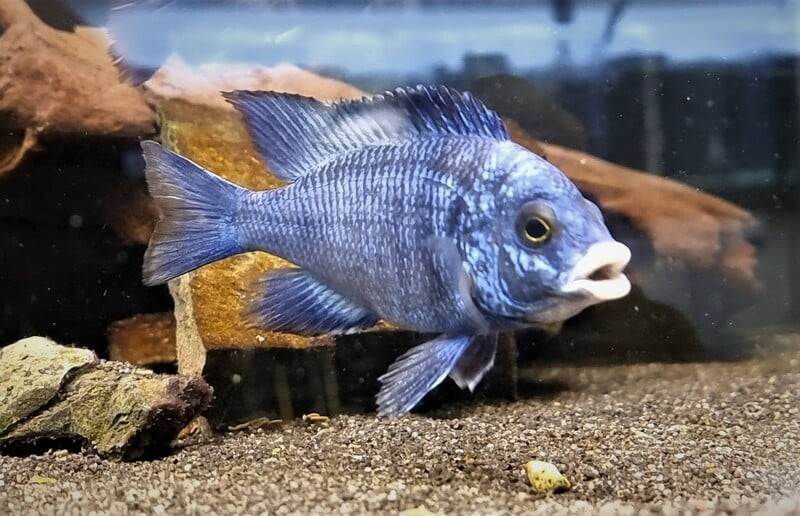
Placidochromis Phenochilus - Mirrorball Cichlid
The Placidochromis phenochilus, commonly known as the Mirrorball Cichlid, is a freshwater fish species belonging to the family Cichlidae. This species is native to Lake Malawi in East Africa, where it inhabits rocky shorelines and deep waters. The Mirrorball Cichlid is known for its striking appearance and vibrant colors, making it a popular choice among aquarium enthusiasts.
Here are some key features and characteristics of Placidochromis phenochilus:
Coloration: Adult Mirrorball Cichlids are known for their dazzling coloration. The body of the fish is typically a metallic blue or silver, and they display a distinctive pattern of dark vertical bars or stripes.
Size: These cichlids can grow to a moderate size, with males typically reaching a length of around 6 to 8 inches (15 to 20 cm), while females are slightly smaller.
Sexual Dimorphism: There is a noticeable difference in coloration between males and females. Males tend to have more vibrant and intense colors, especially during the breeding season. Females may have a more subdued appearance.
Habitat: In their natural habitat, Mirrorball Cichlids are found in rocky areas along the shoreline of Lake Malawi. They are known to feed on small invertebrates and plankton.
Behavior: Like many cichlids, Placidochromis phenochilus can be territorial, especially during the breeding season. Providing ample hiding spaces and creating territories in the aquarium can help manage aggression.
Aquarium Care: To keep Mirrorball Cichlids in captivity, it's important to provide a spacious aquarium with plenty of hiding spots and rocky structures to mimic their natural habitat. Water parameters should be maintained within the preferred range for Lake Malawi cichlids, including a pH of around 7.8-8.6 and water hardness.
Feeding: Mirrorball Cichlids are omnivores, and their diet should include a variety of high-quality pellets, flakes, and live or frozen foods such as brine shrimp or bloodworms.
It's essential for aquarium enthusiasts to be knowledgeable about the specific requirements of Lake Malawi cichlids and to create an environment that supports their well-being. Additionally, understanding the social dynamics and potential aggression among cichlids is crucial when keeping them in a community aquarium



